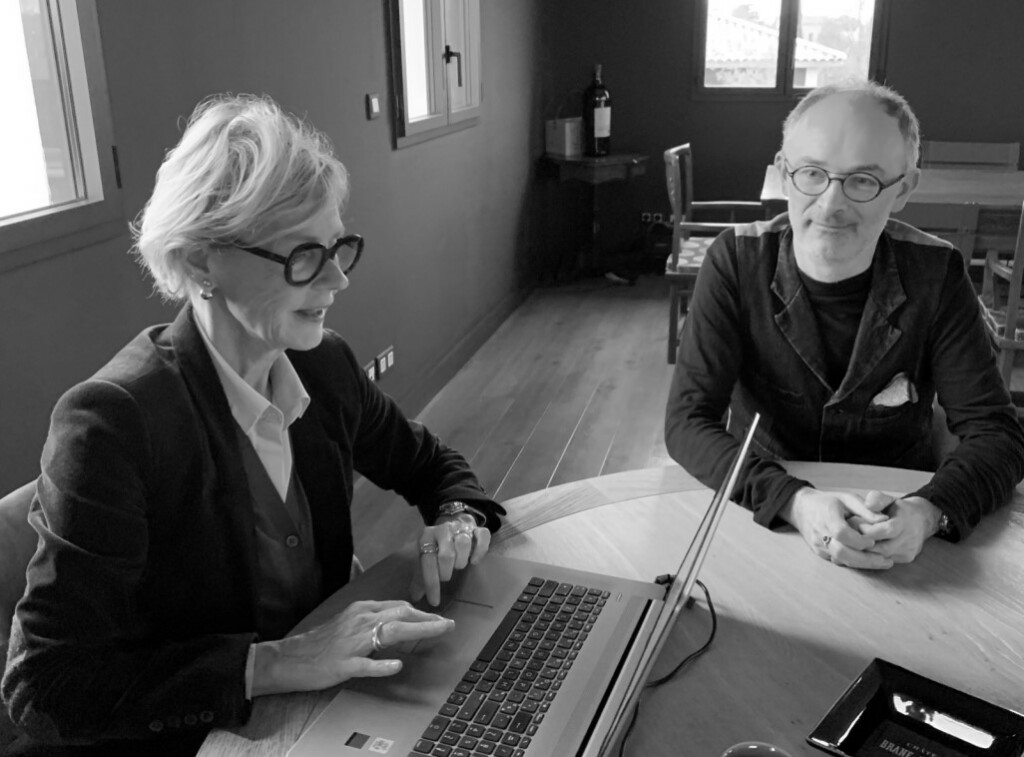🎧We are offering the Inside in an audio file🎧
After this wonderful deep dive into the complexity of Vauthier wines, I wanted to have a discussion with Colin and explore the broader challenges of the market. You’ll find these exchanges in this second part of “Reflected Views by Gerda”.
Insights on the Bordeaux Wine Market
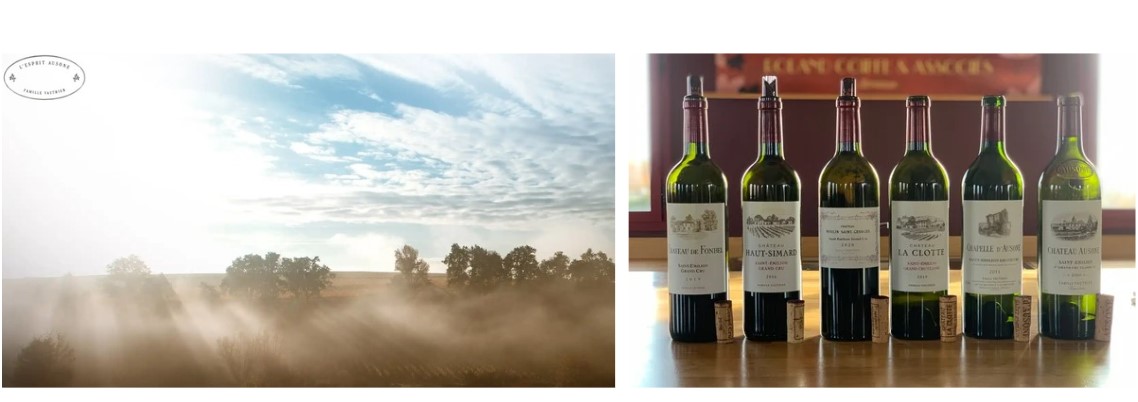
Gerda: Are the wines of Vignobles Vauthier difficult to understand for the new generation of consumers?
Colin Hay: That is a very good question. It’s not the easiest to answer. But it’s the kind of question that I think we need to be asking more. My initial and intuitive reaction to it is to say that I would like to think that these wines are not that difficult to appreciate. But that’s not enough. For there is a collective job of communication that we need to engage in if new generations of consumers are to understand these wines as we would like to think they should. We need to have more to say to consumers and potential consumers, above all young consumers, about how to read these wines and, above all, what it is that we get from these wines. We need to entice them to share that understanding and the passion for these wines that comes from that. So how might we do that? Well, I’d suggest one way of starting is to take two of these wines and to place them side by side. The first thing one might say to our hypothetical young consumer is: do these wines taste different? 99 out of 100 are going to say yes (I hope)! But that’s already interesting. For these wines are made in essentially the same way, by the same people and from contiguous vineyards. The consumer is now, hopefully, intrigued. What makes them so different? Let’s assume they come from the same vintage. We’re already into a conversation about terroir and about how terroir is expressed in the finished wine, whether or not we choose to use the word terroir (after all, we might not wish to terro[i]rise the young consumer so early in the conversation!). The point is that these are wines that come from somewhere. That is not a difficult idea to grasp. That ‘somewhere’, that place, is in this case tiny. And that tiny difference (the Vauthier terroirs are part of the same valley when one thinks about it) makes a big difference in the glass. These terroirs, perhaps 100 metres apart and expressed in essentially the same way, produce very different effects in the mouth and have distinct and very different aromatic profiles. That excites me and I think it has the potential to excite the young consumer. The people from whom one gets a positive response are on the road of discovering what we love about these wines. In short, we need to share – and communicate – our passion and with it a little of our understanding. In a way, it is quite a simple thing. And it is very, very present here in the Vauthier wines. With the 6 bottles of wine that we tasted we can tell a great story about the diversity of Saint Emilion. A young taster is likely to learn a great deal from the kind of exercise we’ve just engaged in – with a little bit of input from us. It is also not so different from what the young consumer does when she buy something like coffee and asks where it comes from, how it is roasted, why it tastes the way it does and so forth. I don’t see why the new consumer cannot be enticed and inspired by that kind of a conversation about wine as well. But we need to lead the conversation. It is a job of work for all of us!
G: You know the Bordeaux market very well. It is currently going through a challenging period and not just Bordeaux. What are your thoughts on the current situation, and how do you see the future?
CH: There is no hiding from the truth: the situation is challenging and it has been challenging for quite a long time now. It is not going to get better quickly any time soon, I fear. But I don’t really see it as deteriorating significantly either. That said, there are a lot of uncertainties. Bordeaux is often on the front line of this for a number of reasons. One of these is the simple significance of Bordeaux for the entire market. If Bordeaux is not doing well then the fine wine market is not doing well. It is almost impossible for the fine wine market to be doing well without Bordeaux doing well. A second factor is that la place de Bordeaux and its institutions are so essential to the global diffusion of fine wine, including today non-Bordeaux wines. The effect is that it responds very quickly to the changing mood music in international markets and often leads the market trend in fine wine. In a sense, la place de Bordeaux is such a commercial force that it both understands and responds to the commercial consequences of a down turn in international markets very quickly. There is a final fact which is also very important. Quite simply, Bordeaux exports most of the wine that it produces. Other wine regions are typically a bit more protected from global market shocks because more of the wines they produce are consumed domestically. The Italian market is a good example. A higher proportion of the wine it produces serves a more traditional domestic demand – a demand more likely to be maintained even in a global downturn. It is, in other words, a little less exposed to the vagaries of the global market. Bordeaux, by contrast, is very much in the front line.
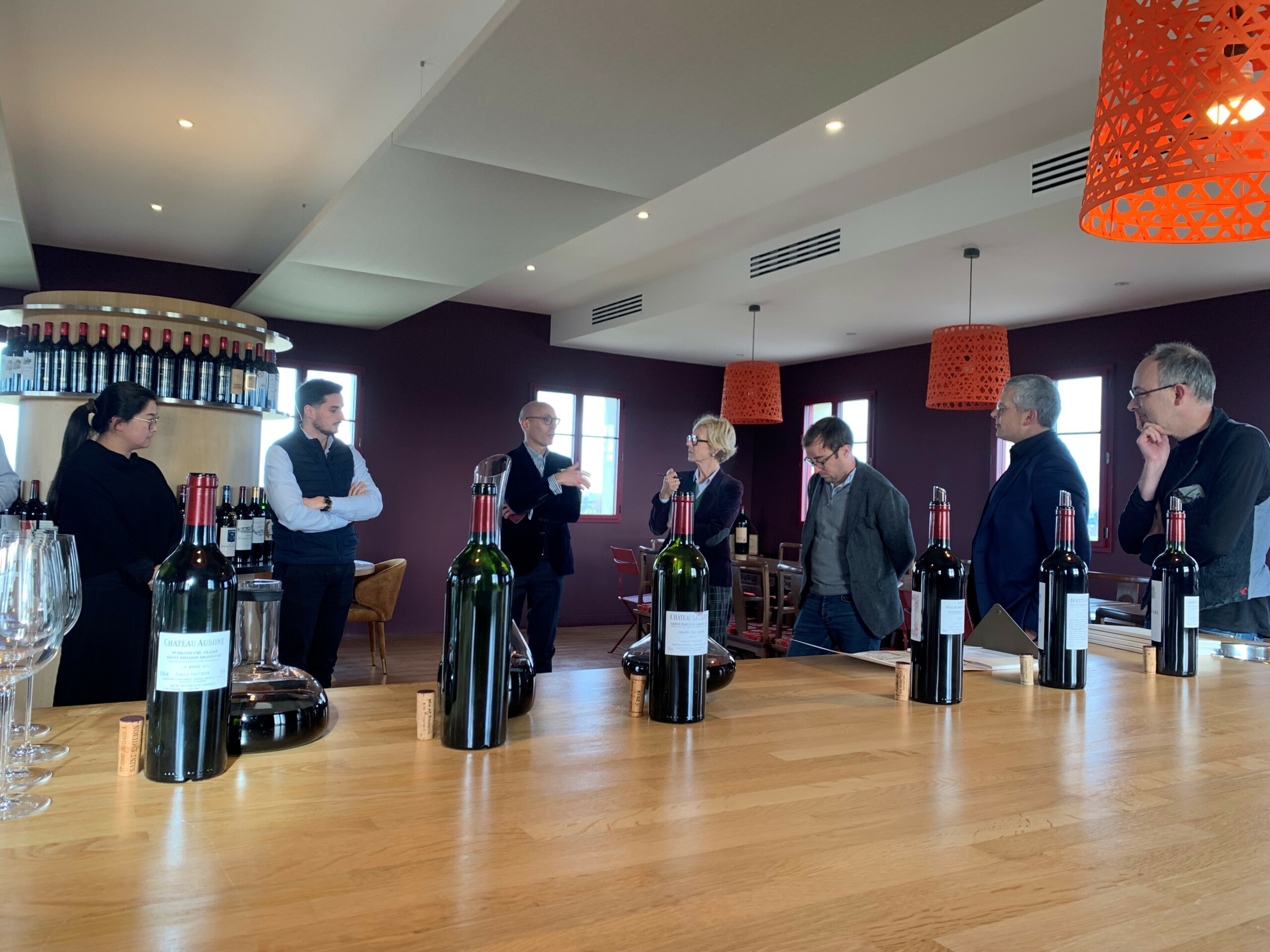
G: What should we do in Bordeaux for a positive “image building”?
CH: Positive image building, as you put it, is very necessary. The problem, to some extent, has been that Bordeaux market actors have exhibited (and been seen to exhibit) a certain degree of complacency – a perhaps understandable consequence of a market that was growing stably from one year to the next but is no longer. Even during the global financial crises and the Covid period that followed Bordeaux ticked over pretty well. So the downturn when it came was a bit of a revelation. It came as something of a surprise and a shock. Things turned badly when they weren’t expected to and they turned badly very quickly. Over the long benign period of the ‘great moderation’ as it’s sometimes called, it was relatively easy to sell these wines. Again, perhaps unremarkably, some relatively lazy practices became habituated. One could sell quite a lot of wine without doing a lot of work on the ground. Partly because of that, more and more wines came to Bordeaux (to la place) and came to be sold in that kind of the way. La place was seen, quite rightly, as a very effective way of selling wine – a neat solution (logistical and institutional) to the global distribution problem. But la place was only operating at perhaps 50 per cent of its potential capacity. That was fine when demand was high and rising. But in its confident complacency it had come to abandon some of the basics. It now needs to return to these – remembering that the traditional model of selling fine wine requires direct face-to-face contact with the market.
G: Yes, the property needs also to be in contact with our clients, importer, distributors, and also with the final consumer.
CH: Yes, if you have a close, direct and ongoing relationship with your importer it’s rather more difficult for them to say no to you! And that goes for the negociant as much as the property. Bordeaux – and la place de Bordeaux above all – has acquired something of a reputation for being – how can I put it? – a little ‘cold and transactional’. It is much easier to say no to that. E-mail offers are more easily rejected than those made by phone calls. And when it’s done face to face it is much more difficult still to refuse. Today, thankfully, the negociants and the chateaux are starting to work differently. They are working, often together, and in a way that it is more personal. If you learnt your skills as a négoce (a broker) over the 10 last years this is probably a new way of working and one you might not yet be very familiar with. These are the skills that will need to be acquired if Bordeaux is to succeed over the next 10 years. But, more positively, Bordeaux is well-placed to respond to current market conditions well. Frankly, Bordeaux and la place has a greater degree of flexibility and agility than other distribution systems. If, one market is not performing well, it’s less of a problem for la place. For there are another 120 countries out there to pick up the slack.
G: Should Bordeaux continue to propose its wines En Primeur?
CH: Yes, absolutely, in my view! En primeur is a spotlight and it is also an institution. Bordeaux needs its institutions and it needs every spotlight it can draw towards is. To end en primeur, as some have suggested, would in my view to do a great and lasting disservice to Bordeaux as a region. It would be like shooting oneself in the foot. En primeur is a unique opportunity to put our wines on a public stage – a first chance to build interest in them and for them to be tasted by the critics and those who will ultimately sell them. We can’t afford to lose that. And if it were to be lost, it would need to be replaced by something else. There is an argument that one often hears suggesting that en primeur might give way to (and be replaced by) an in bottle (livrable) post primeur, two years on. There is a logic to that, but ending primeurs is not in my view the best way to improve the visibility of Bordeaux wines post primeur. Nor is it a necessary condition of a better organised post primeur system. And, crucially, the transition from one to the other is very difficult to imagine, not least because it comes at a significant price to all the actors of la place. It would only serve to make an already difficult economic situation worse condemning properties, negociants and, indeed, courtiers to 2 years of loss of income as wines previously sold en primeur wait to be commercialised in bottle. That said, if Bordeaux 2024 en primeur were to go very badly we would already be in a situation in which the first effective commercialisation of these wines would have to come later – in bottle, post primeur. But it is worth noting that the non-Bordeaux wines sold through la place are already all sold in bottle. And, in recent years, they haven’t fared any better than their Bordeaux en primeur peers. That suggests to me that en primeur is not the problem here. The problem at the moment as I see it is that the demand in the world market for young wines is very low (lower than it has been for decades). In the 2023 campaign, most châteaux significantly reduced their prices (some more than others, of course). Some argue that these price reductions were just not enough to interest the market. But, quite frankly, it’s not clear to me that even a 50 per cent reduction in price across the board would have seen Bordeaux sell out en primeur. The problem, at its core, is a lack of demand. It is not really about the supply of wine at a particular price. But that is not an argument for price retention; prices need to be attractive and where they are not attractive they need to be made more attractive. But what I am saying is that we shouldn’t be seeking what economists often called the ‘clearing price’ (the price required to ensure that 100 per cent of the good is sold). The brutal reality is that the clearing price for Bordeaux 2023 was almost certainly negative. The problem as that suggests is demand not supply. The implication of that is that, yes Bordeaux needs to get its en primeur pricing right. But Bordeaux also needs to be sanguine about the 2024 vintage. However well it is priced we cannot expect to sell 100% of what is offered to the market.
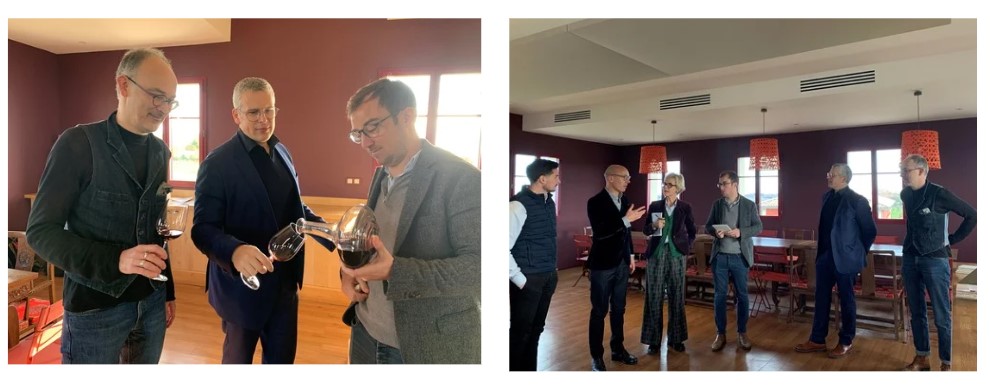
G: Habits are changing very quickly nowadays. Do you think the new generation will ever be interested in buying En Primeur, as their parents or grandparents did?
CH: There are two elements to the answer to your question I think. The first is the wider (and crucial) issue of the inter-generational transfer of wine consumption. What is the relationship, if you like, between the consumption patterns of the young, their parents’ generation and their grand-parents’ generation? A crude simplification would be that the grand-parents are most likely to buy (or to have bought) en primeur, the parents a little less likely to do so (or to have done so) and the children a lot less likely to do so. It is not difficult to see that, if that is true and things continue in this vein, demand for fine Bordeaux will shrink from year to year, decade to decade and generation to generation. But it is also important to note that we are talking here about habits. And habits can change between generations. I think Bordeaux, and the fine wine market more generally, needs to work very hard on trying to encourage and entice young generations into thinking that they want good quality wine and that a very good way of acquiring very good wine for very good prices is to buy en primeur. But we’re not there yet!
A second element of this is the (complex) relationship between the supply of and demand for wine over time. We live today in a situation in which the global supply of fine wine, and wine in general, is falling for a number of reasons. By far the most significant of these is climate change.
Up until now the decline in demand (that we have already talked much about in this interview) has been greater than the decline in the total production of fine wine. The effect is simple. Today, supply outstrips demand because demand has been falling more precipitously. But it does not take much climate science to see that we are likely to reach a point – sooner or later – where these two factors become more closely balanced than they were or are today.
If we project a future, say 30 years from now, it is difficult not to imagine that we will produce a lot less wine of very high quality than we do today – in Bordeaux and more globally. That is likely to be a massive re-equilibrating factor. If you are able to continue to produce high quality wine in that anticipated future, your position in the market will be stronger than it is today. That sounds good. But it is, of course, the consequence of a tragic story. I would love to be able to project a future for fine wine unaffected by climate change, but that is not the reality of the situation in which we find ourselves. The consequences – including for the market – are colossal.
In the long term, then, we will produce less wine. But we are also likely to have less difficulty in selling the fine wine that we do produce at higher prices simply because fine wine will become ever more scarce. That is also likely to generate significant new demand for back vintages – all the more so if those vintages, like 2020, come from a period of time when Bordeaux was still witnessing the positive effects of earlier climate change. By the time we get by 2050 or 2060, it seems reasonable to assume, the style of a vintage such as 2020 will be very rare indeed. That makes it look under-priced relative to likely future demand. As this suggests, climate change is a perspective changer.

G: It means a great mutation of the market for Fine Wine which will shrink in one way or the other.
CH: Yes, I think that is now inevitable precisely because continued and accelerating climate change is now inevitable. But these changes are likely to bring supply and demand back into some kind of harmony (at least for a certain period of time). As you said, the market will shrink in one way or another. But that is not necessarily a bad thing for those market actors (properties, courtiers and negociants) who survive until then. The problem is that between now and that point there will be many casualties, including of course many producers already threatened economically and increasingly threatened climatically. We see that already in Italy which has lost its place as the largest global producer of wine by volume to France. This is not because France is producing more, but because Italian production is falling faster. Italy is at a point on the climate change curve where it is more impacted. But Italy’s present is France’s future.
G: Do you think that we on La Place are collaborating sufficiently to face the challenges we are talking about?
CH: Bordeaux has a colossal commercial force but one distributed amongst a large number of separate entities. It suffers from what a political scientific like me would call a ‘collective action problem’. What it is rational for properties and negociants to do as individual actor can be, and often turns out to be, collectively damaging. The pursuit of individual advantage produces a collective loss. Another way of putting this is that the separate actors lack a coordinating capacity. Interestingly, the classic solution to collective action problems is the institution. Institutions coordinate things that would otherwise be uncoordinated. En primeur is an institution which, for good or ill, coordinates the first commercialisation of Bordeaux wines. La place is an institution too – indeed, an institutional complex made up of institutions! Bordeaux’s problem is that some of its institutions are suffering. They are performing at less than full capacity, whether than be en primeur or la place itself. But what is clear to me is that Bordeaux needs its institutions and maybe a little bit of institutional reform to improve their functioning.
Above all Bordeaux needs institutions that would allow the negociants to talk to the properties collectively rather than individually. I don’t see any great evidence of this happening at the moment. But I do think that there is more awareness from the actors of la place of the need to sit around the table, to deliberate and to construct together solutions to Bordeaux’s problems. The irony, of course, is that as a wine writer I find myself talking to many of these entities. I find that the conversation is typically fairly similar. It is not terribly difficult to identify what the collective interest is, but it is not always easy to act upon it.
G: But are we in Bordeaux capable to acting together?
CH: Intriguingly, it has often been suggested to me that I am well-placed to lead the kinds of conversations that would help Bordeaux to act collectively rather better than it does today. My response is typically to say: that is the right question, but it seems odd to turn to me, an outsider, to organise that kind of conversation. I think that the lead needs to come from inside Bordeaux, inside la place. But the very fact that the question is being posed I find encouraging. And, of course, I would be delighted to be involved in any conversation of that kind.
G: we have to stay optimistic.
CH: Absolutely, and I think you can tell from my responses to all of your questions that I remain an optimist. The bottom line, though, is that the market conditions are crucial. That is why I write about them so often in The Drinks Business. Here there are, I think, two important things to say. The first, a rather sensitive point perhaps, is that one of the difficulties for Bordeaux is that whilst the properties, the negociants and the courtiers often understand the situation and the market conditions very well, they are not always well placed to act – as they are not necessarily the decision makers. The decision makers are often the ‘actionnaires’ (stakeholders) and they are often further from the daily life of the market. Those actionnaires need to come to understand the specific factors influencing the Bordeaux market better if they are not to repeat the familiar mistakes of the recent past.
A second and rather more positive point is that, in the end, difficult market conditions reinforce the consumer’s search for value for money. And most of the wines that I taste from Bordeaux – because of technical accomplishment, the degree of competition in the markets in which they are present and the commercial way in which they are sold – represent very good value for money at very different price points. That applies very well to the Vauthier wines we tasted today. Try to find another wine in the world at any of their respective quality points and see if you can beat them on price. You will be struggling to do so. Bordeaux, in short, has lot of the ingredients to succeed even in very difficult market conditions. Look at the de Fonbel or Haut Simard wines that we tasted. In comparison to other regions in the world at this price point you are getting a lot of wine for your money. And for me that applies all the way up to Ausone 2010. It is not a cheap bottle of wine, of course. But where would you have to go to put something on the table that offers the same kind of quality? And how much would it cost?
G: I have one last question. Many estates are today hiring commercial directors. The Vauthier family did so not long ago with Antoine Gimbert. What is your perspective on this trend?
CH: It is interesting and, to date at least, there are not that many right bank properties that have done this. But it is a sign of things to come. It shows where we are. I had conversations recently with a leading left bank property about how they are re-thinking the commercialisation of their wines, using more external advisers beyond the family. It is a logical move, above all for those with the resources to invest now. More right bank properties should be thinking of doing that. But there are risks too. When it comes to using consultants for the promotion of wines, I think the danger is in getting a kind of package that is the same for everyone. In the end there is no substitute for just making sure that the négociant(s) you are working with as a property know your wines and are well placed to commercialize them. You have to know what they are doing for you and you, as a property, need to be working with them to help them in doing that. Whilst a commercial director certainly helps you to achieve that, the strategy one constructs needs to be property-specific – it cannot easily be generalised.
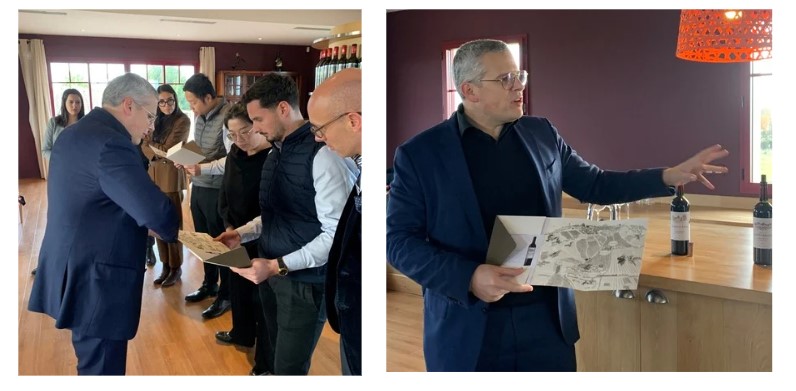
G: Yes, that is one of the things that has changed significantly since 1996, when I started working for a négociant. Nowadays, estates want and should have a clear understanding of the quality of their distribution.
CH: Yes, but the smaller your property is the less likely it is that you have travelled a lot to sell your wines. You are just too busy with other things. Some Saint Emilion and Pomerol properties are, in that respect, more like a small Barolo producer, with the 5 members of the family responsible for everything. They have to stop commercializing their wines when it’s harvest time. There aren’t enough hours in the day.
G: But those Italian wines have a significant domestic market, as you mentioned earlier. If you want to create exposure for your wine, you need to stay connected to the market.
CH: Yes, that is true. But the other thing here is that, today, it is the big volume producers the perhaps need to be most concerned by market trends. They have commercial teams in place, they have been doing these things for a long time; it’s more difficult for them to innovate. And they have the disadvantages that come with high volume. High volume is tricky when demand is low. In that respect, Saint Emilion and Pomerol have something an advantage in this kind of situation when compared to the famous names of the 1855 classification. And it is interesting to see that it is now the small right bank properties that are attracting commercial directors from the left bank.
G: Yes, because even during this more challenging time we have to be on the road.
CH: : Yes, and actually Bordeaux is very good at doing that. It always has been good at taking its wines to all corners of the globe. Its institutions, to return to an earlier theme, were designed for this. The tripartite structure of la place – the property, the courtier as go-between and the negociant – is in the end a very efficient solution to the problem of how to sell wine globally. We need to remember that – even if today, in difficult market conditions, a little bit of institutional reform is probably required!
Gerda BEZIADE has an incredible passion for wine, and possesses a perfect knowledge of Bordeaux acquired within prestigious wine merchants for 25 years. Gerda joins Roland Coiffe & Associés in order to bring you, through “Inside La PLACE” more information about the estate we sell.

